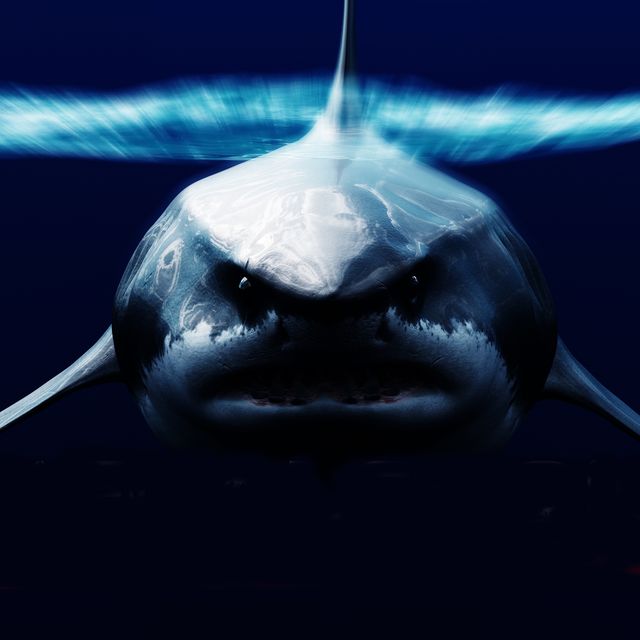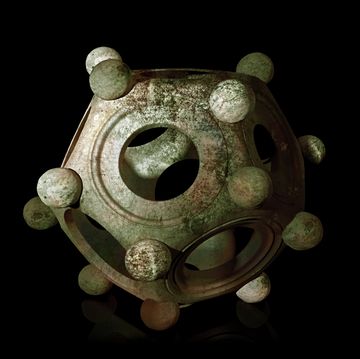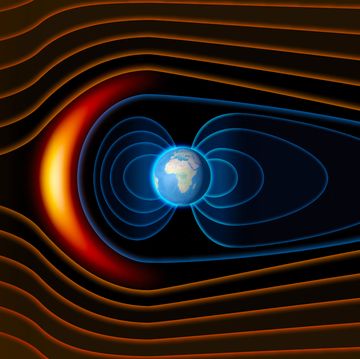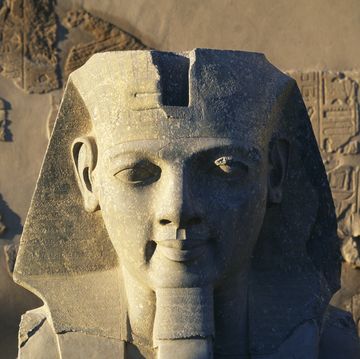- A new study posits that the ancient megalodon shark was longer and slimmer than previously believed.
- The ancient shark has been compared to the great white, but it may have more closely resembled the mako.
- If true, the information could reshape our view of ancient predatory ocean creatures.
We’re not quite sure if a new description of the extinct megalodon shark makes it more or less frightening. The fresh theory—described in a theory that was recently published in Palaeontologia Electronica—claims that the ancient creature was longer and slenderer than previously thought, with new estimates putting the size of the potentially 3.5-million-year-old fish around 50-65 feet in length.
We’re guessing that no matter exactly how the megalodon looked, it made for an imposing sight.
“Our team reexamined the fossil record, and discovered the megalodon was more slender and possibly even longer than we thought,” Phillip Sternes, a University of California, Riverside biologist and the paper’s first author, said in a statement. “Therefore, a better model might be the modern mako shark. It still would have been a formidable predator at the top of the ancient marine food chain, but it would have behaved differently based on this new understanding of its body.”
A team of 26 scientist from around the world got involved in studying the Otodus megalodon, spurred by updated analysis of a fossilized megalodon spine housed at the Royal Belgian Institute of Natural Sciences in Brussels.
“It was a eureka-moment when our research team realized the discrepancy between two previously published lengths for the same megalodon specimen,” Kenshu Shimada, study co-lead and DePaul University paleobiology professor, said in a statement.
The experts measured the whole vertebral skeleton of the living great what shark with a CT scanner, and compared it to previous reconstruction models of the megalodon vertebral column. “It was still a giant, predatory shark,” Sternes said. “But the results strongly suggest that the megalodon was not merely a larger version of the modern great white shark.”
This challenges long-held beliefs about the creature’s size, shape, and even behavior. Forming an accurate view of an ancient shark has proven to be tricky business. Sharks are cartilage-heavy animals, and cartilage doesn’t fossilize very well. So, there’s not dinosaur-style shark skeletons fro expertsto collect and analyze. Instead, scientists rely mostly on teeth and vertebrae stands as guides for their size estimations.
By comparing the vertebrae of the modern-day great white to the megalodon example, the team found that the vertebral column on the megalodon is thinner. The researchers believe that meanst the shark had a completely different body compositionthan previously believed—slimmer and longer.
Of course, not everyone is on board with the findings. Authors of a previous study on the ancient shark’s size told Live Science that the new theory suffers from “circular logic,” and is based on a single observation without statistical support. “More critically,” they said, “several aspects of the study are impossible for future researchers to verify or replicate as the authors do not provide the raw data.”
But if Sternes and the team are correct, their find deosn’t de-throne the megalodon—the creature still represents one of the largest marine predators to ever have lived. The slimmer, elongated body design, however, means that the shark’s digestive canal was longer than previously believed. This would have allowed for enhanced absorption of nutrients that could have cut down on the number of feedings a shark needed.
“With increased ability to digest its food, it could have gone for longer without needing to hunt,” Sternes said. “This means less predation pressure on other marine creatures. If I only have to eat one whale every so often, whale populations would remain more stable over time.”
Scientists have long believed that the megalodon extinction was caused by a decrease in prey. Sternes thinks the revised view of the shark’s shape offers up other options for its demise, including that the great white shark—with its more agile frame—made it a more accomplished predator than the megalodon. ‘That competition for food,” he said, “may have been a major factor in [the megalodon’s] demise.”
Tim Newcomb is a journalist based in the Pacific Northwest. He covers stadiums, sneakers, gear, infrastructure, and more for a variety of publications, including Popular Mechanics. His favorite interviews have included sit-downs with Roger Federer in Switzerland, Kobe Bryant in Los Angeles, and Tinker Hatfield in Portland.













